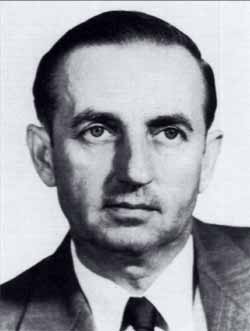|
|
|
Teddy recalled most management as very supportive of the people who were not fluent in English. He had occasion to talk to Chance Milton Vought soon after arriving on the job, as he remembers this humorous encounter when he was searching a disorganized stock room for a piece of steel. Mr. Vought appeared and said in German, “Not so much noise”. Teddy remembers thinking “The big boys speak German!” He learned later that, though Management was patient with them, they had little experience in communicating with their immigrant population. Chance Vought visited the work area almost every day. Teddy remembers working with Pop Reichert during a time when Pop was frequently inventing new machines and processes for product improvement. John Cook assisted Reichert as mechanic in developing a machine to use in lubricating the fuselage, a project suggested by Chance Vought. Other Reichert inventions included a machine in which a fuel tank could be placed to vibrate; a flexible gun mount having two telescoping arms; the 360-degree tail wheel, and a lubricating gun. Jimmy Dean promised to teach Teddy all about engines if Teddy would help him build an airplane, and work on boat motors. Chance Vought owned several large motor boats, which he raced. He loaned one of his boats to Teddy and Jimmy for their entertainment. In return, they kept his boats in top mechanical condition. During this period, there was no separate experimental shop. The mechanics worked with steel tubing, and installed fittings during the design and development of these complex aircraft. The Dinosaur was a Government aircraft requiring a heat resistant nose cone and leading edge, which the company was contracted to develop and build. Graphite and zirconium oxide were used. A jet engine was mounted as part of the testing procedure, as witnessed by Russ Clark from Engineering. This design was successful; however, the contract was canceled. After moving to Hartford into a new building, the Experimental Department came into being. Teddy once spilled oil on the oak floor around the drill press, resulting in a trip to a nearby service station to purchase gasoline to clean up the floor. At his retirement celebration, coworkers gave him the forty cents of his own money he spent on the gasoline. Teddy worked on all models of aircraft produced by the Company from 1917 to 1972. The V-143 Aircraft was built in record time. The design was purchased from Northrop, and later sold to Japan. The F4U Corsair was initiated in Hartford. Teddy was a Leadman in Experimental who found this program very interesting. This model's rings had a special “U” shape and were covered by fabric, another product of Pop Reichert’s innovations. The wing was covered with a fabric band. The unique V-173 Flying Pancake was initially designed by Charles H. Zimmerman around 1945 in Stratford, and was made from wood. John Lingel was involved in the structural portion of this aircraft. Boone Guyton was also involved in the production of this circular-wing model having two 80 h.p. wing-tipped motors, laminated wood props, fabric-covered wing and twin tails. This aircraft was flown several times by Charles Lindbergh, who was intrigued by its design. This aircraft is currently stored at the National Air and Space Museum, Washington, D.C. The XF5U was the metal version of the Flying Pancake; planned to be larger and more powerful than its predecessor. However, Navy funding cuts after WWII resulted in loss of the contract. Coworkers like Herman Meiners, John Reiger, Mike Bilchak and Charlie McCarthy were making significant contributions during these early developments. Teddy's job also included making models of these aircraft, thus helping to preserve the Company history. Teddy’s immigration to the United States in 1927
|

 Jimmy Dean of Chance Vought Corporation hired Theodore (Teddy) Trept in 1927, then located on Long Island, New York. His starting salary was a whopping sixty cents an hour. Although the wages seemed enormous, there were no fringe benefits then; employees were paid only for hours worked-no vacation or sick days, and no medical insurance.
Jimmy Dean of Chance Vought Corporation hired Theodore (Teddy) Trept in 1927, then located on Long Island, New York. His starting salary was a whopping sixty cents an hour. Although the wages seemed enormous, there were no fringe benefits then; employees were paid only for hours worked-no vacation or sick days, and no medical insurance.